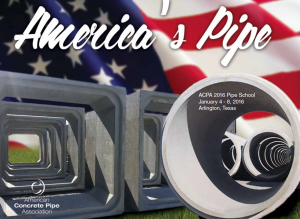(ConcreteProducts.com) – After flooding and wildfires have increased scrutiny of materials used in the state’s roadway systems, Precast Concepts hosted a Colorado Senate and House Transportation Committee tour of its Henderson pipe and drainage structures plant, west of Denver, informing lawmakers on infrastructure quality, safety, design and life cycle costs.
Presentations at the ACPA-organized event covered the importance of proper installation and inspection of all highway drainage products; federal MAP-21 policy for culvert pipe selection; risk assessment factors surrounding drainage product specification, including flammability, floatability, road use and service life; and, the importance of choosing durable infrastructure that saves Colorado taxpayers in the long run. Hosts also discussed the use of reinforced concrete drainage products in the reconstruction of a Colorado stretch of U.S. Highway 36.
“The goal was to educate key decision-makers about the importance of selecting high-quality, resilient, long-lasting pipe products for use in highways,” notes ACPA Director of Engineering Services Kim Spahn. “We likewise wanted to emphasize the good news that the best products for the job are made right here in Colorado, not just by Precast Concepts, but also Boughton Precast, Oldcastle Precast and Rinker Materials,” she adds.
The mid-July gathering concluded with open Colorado Transportation Legislation Review Committee dialog on 1) the need for Colorado Department of Transportation, per MAP-21 language, to empower engineers on a project-by-project basis to choose pipe materials based on their professional judgment and site specifics versus following current pipe selection policy; and, 2) CDOT ensuring enforcement of current inspection requirements, among them deflection testing of flexible pipe products once installed, consistent with the three-edge-bearing test for concrete pipe.


